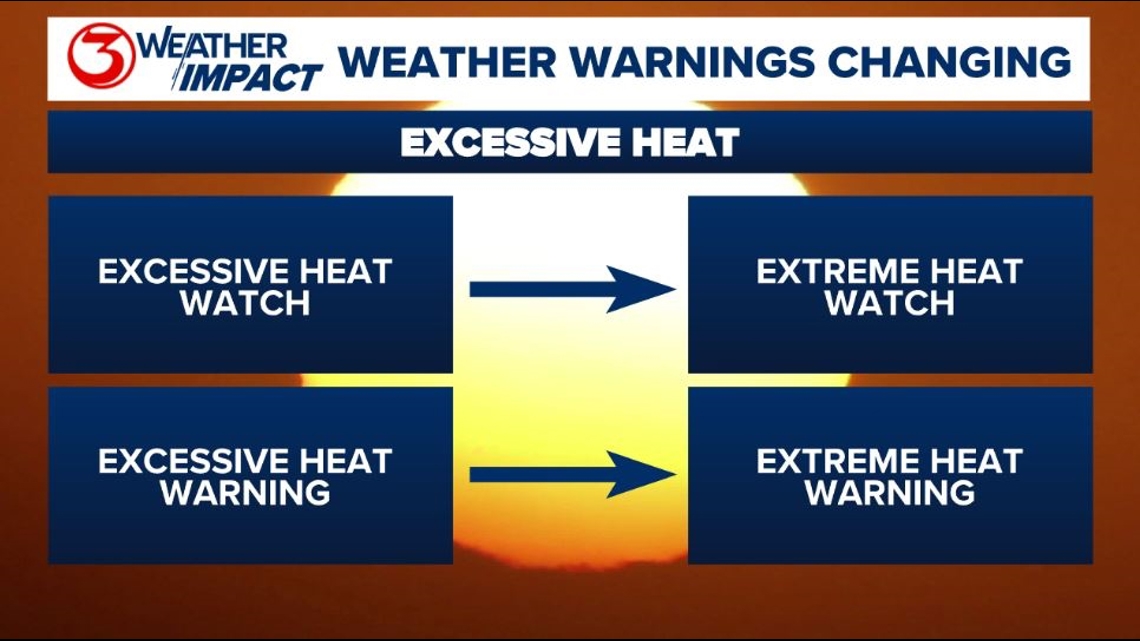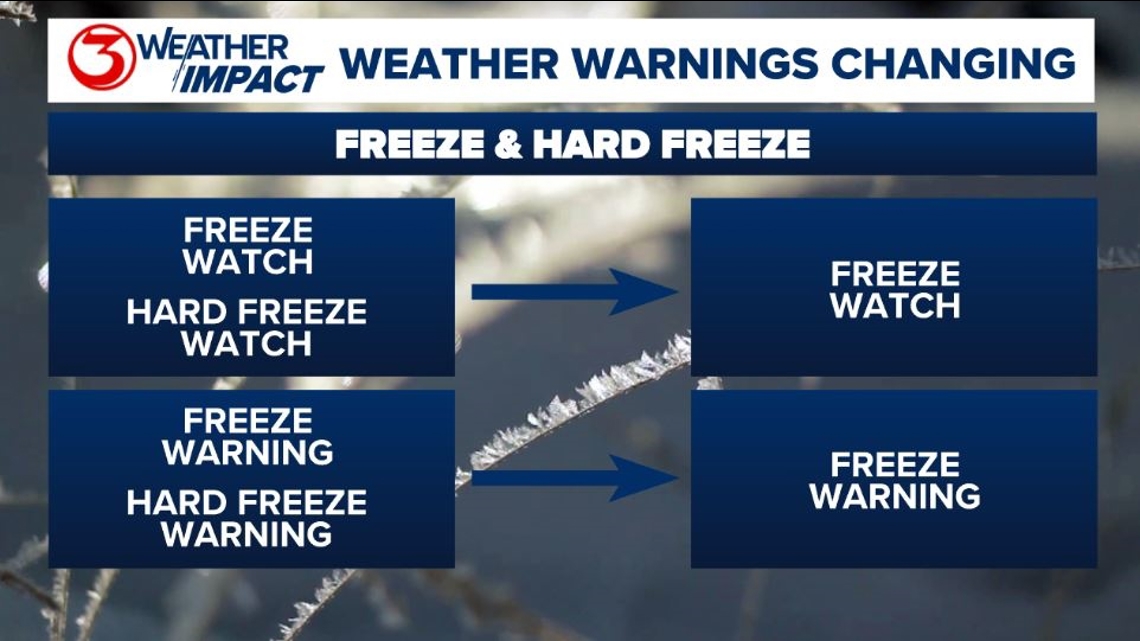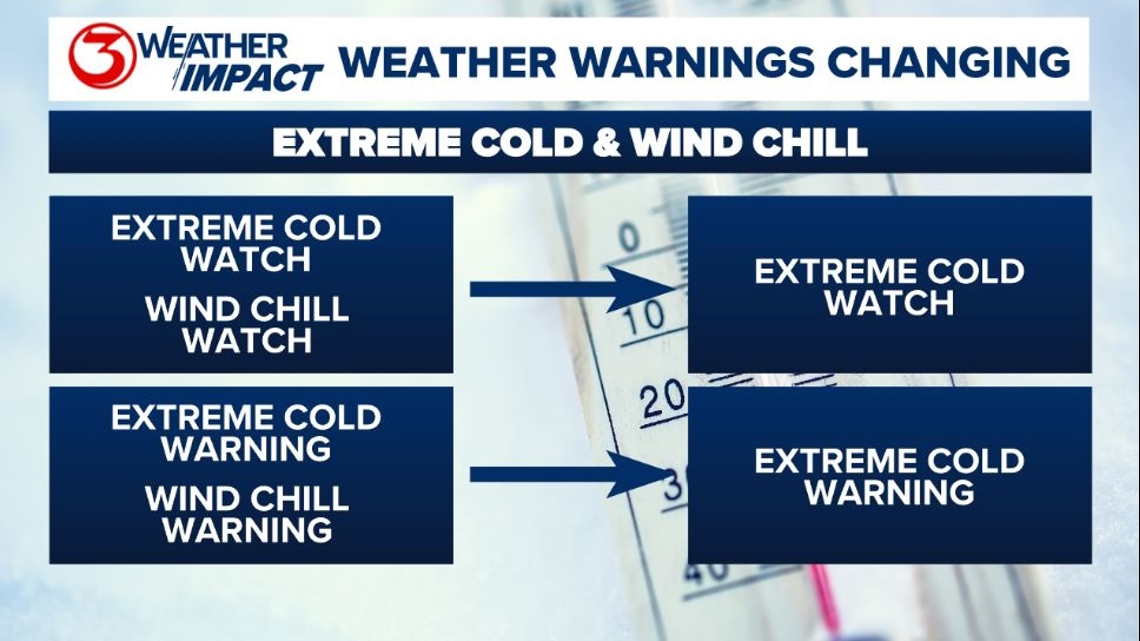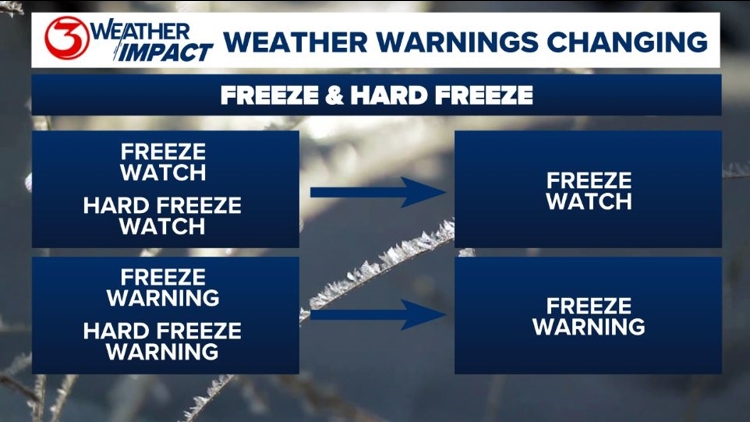At the beginning of October, the National Weather Service (NWS) began implementing their revamp of the Watch, Warning, Advisory (WWA) system as part of the ongoing NWS Hazard Simplification Project. The WWA system is used to alert people of forecasted weather hazards, like severe storms and extreme temperatures.
Why is the NWS doing this?
The Weather Service is acting upon data they've collected during engagements, surveys, and social science research. They're simplifying and consolidating extreme temperature watches and warnings to improve the messaging of weather hazards. The revamp will help streamline the forecast process, allow for clearer watch/warning/advisory maps, and unify the terms used across the United States.
Which watches, warnings, and advisories will be affected?
The NWS is consolidating Excessive Heat, Freeze and Hard Freeze, and Extreme Cold and Wind Chill products.
Excessive Heat
We know the Excessive Heat Warnings all too well after the last two summers in the Coastal Bend. We saw 41 last year and nine this year. The next time it's hot enough for us to get one, it won't exist any more.
Excessive Heat Watches/Warnings will become Extreme Heat Watches/Warnings. The exact criteria for these will still be geographically dependent. The criteria in the Coastal Bend is a feels-like temperature of 115°F to two or more hours.


Freeze and Hard Freeze
On the other hand, we can also get our fair share of cold weather in the winter. The Weather Service will be combining the Freeze Watch and Hard Freeze Watch into a single Freeze Watch, and they also will combine the Freeze Warning and Hard Freeze Warning into a single Freeze Warning.
The text within the watches and warnings will still indicate whether or not the freeze is expected to be a hard freeze.
A hard freeze is when temperatures fall under 28°F. This is cold enough to freeze pipes after a few hours.


Extreme Cold and Wind Chill
A step above the Freeze Warnings: Extreme Cold Watches and Wind Chill Watches will be consolidated into an Extreme Cold Watch. Similarly, Extreme Cold Warnings and Wind Chill warnings will be consolidated into an Extreme Cold Warning. Wind Chill Advisories will get a name change to Cold Weather Advisory.
Ingesting the Wind Chill products into the Extreme Cold products allows the NWS to communicate that cold temperatures can be dangerous with or without wind. It helps to emphasize that "cold is cold."
The Cold Advisory will be used for a lower severity cold, and Extreme Cold watches and warnings will be issued for a higher severity of cold. The exact criteria for these will also be geographically dependent.




